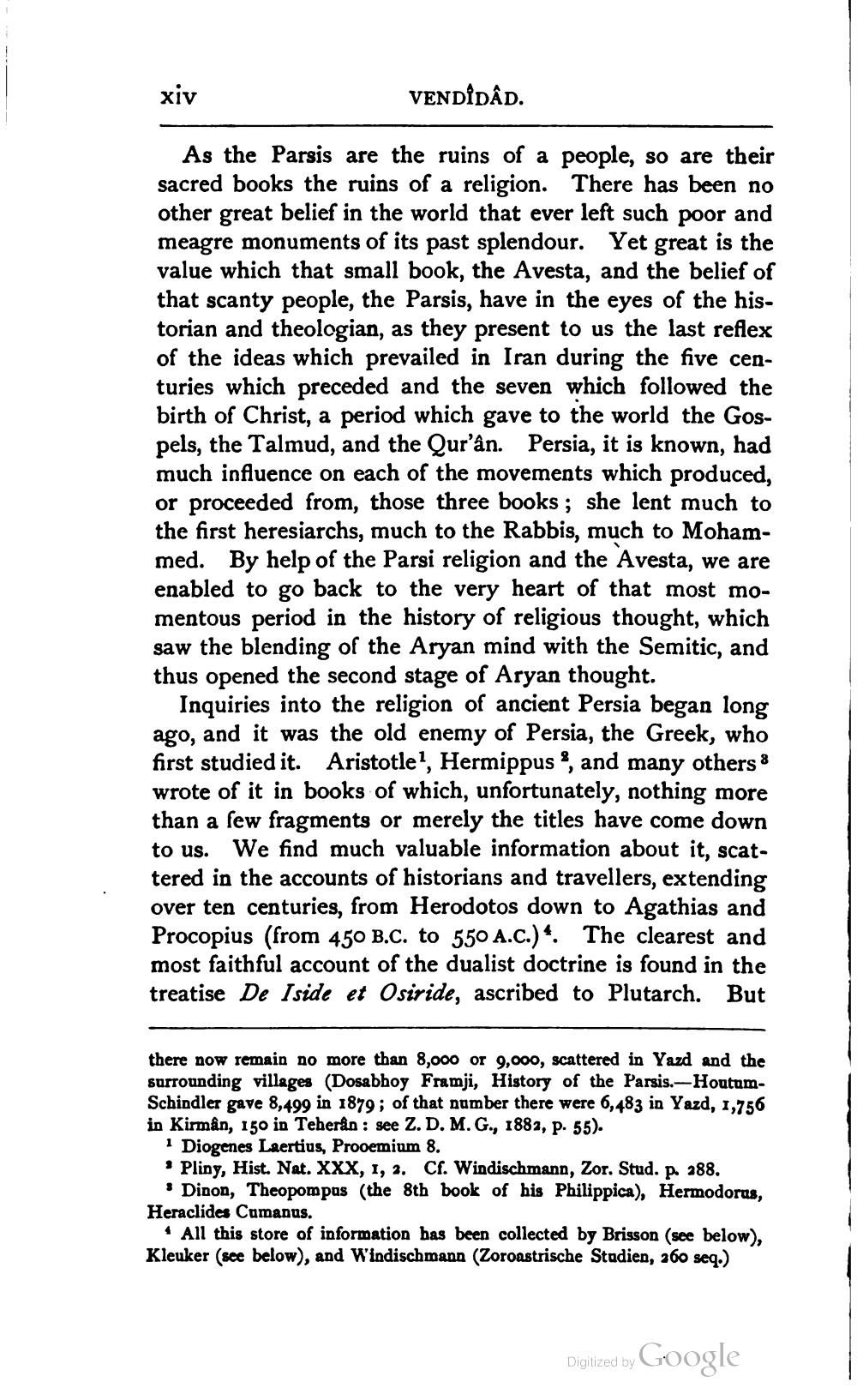________________
xiv
VENDIDAD.
As the Parsis are the ruins of a people, so are their sacred books the ruins of a religion. There has been no other great belief in the world that ever left such poor and meagre monuments of its past splendour. Yet great is the value which that small book, the Avesta, and the belief of that scanty people, the Parsis, have in the eyes of the historian and theologian, as they present to us the last reflex of the ideas which prevailed in Iran during the five centuries which preceded and the seven which followed the birth of Christ, a period which gave to the world the Gospels, the Talmud, and the Qur'ân. Persia, it is known, had much influence on each of the movements which produced, or proceeded from, those three books; she lent much to the first heresiarchs, much to the Rabbis, much to Mohammed. By help of the Parsi religion and the Avesta, we are enabled to go back to the very heart of that most momentous period in the history of religious thought, which saw the blending of the Aryan mind with the Semitic, and thus opened the second stage of Aryan thought.
Inquiries into the religion of ancient Persia began long ago, and it was the old enemy of Persia, the Greek, who first studied it. Aristotle, Hermippus, and many others 8 wrote of it in books of which, unfortunately, nothing more than a few fragments or merely the titles have come down to us. We find much valuable information about it, scattered in the accounts of historians and travellers, extending over ten centuries, from Herodotos down to Agathias and Procopius (from 450 B.C. to 550 A.C.). The clearest and most faithful account of the dualist doctrine is found in the treatise De Iside et Osiride, ascribed to Plutarch. But
there now remain no more than 8,000 or 9,000, scattered in Yazd and the surrounding villages (Dosabboy Framji, History of the Parsis.-HoutumSchindler gave 8,499 in 1879; of that number there were 6,483 in Yazd, 1,756 in Kirmân, 150 in Teheran : see Z.D.M.G., 1882, p. 55). 1 Diogenes Laertius, Prooemium 8.
Pliny, Hist. Nat. XXX, 1, 2. Cf. Windischmann, Zor. Stud. p. 288. • Dinon, Theopompas (the 8th book of his Philippica), Hermodoras, Heraclides Cumanus.
All this store of information has been collected by Brisson (see below), Kleuker (see below), and Windischmann (Zoroastrische Stadien, 360 seq.)
Digitized by
Digitized by Google




